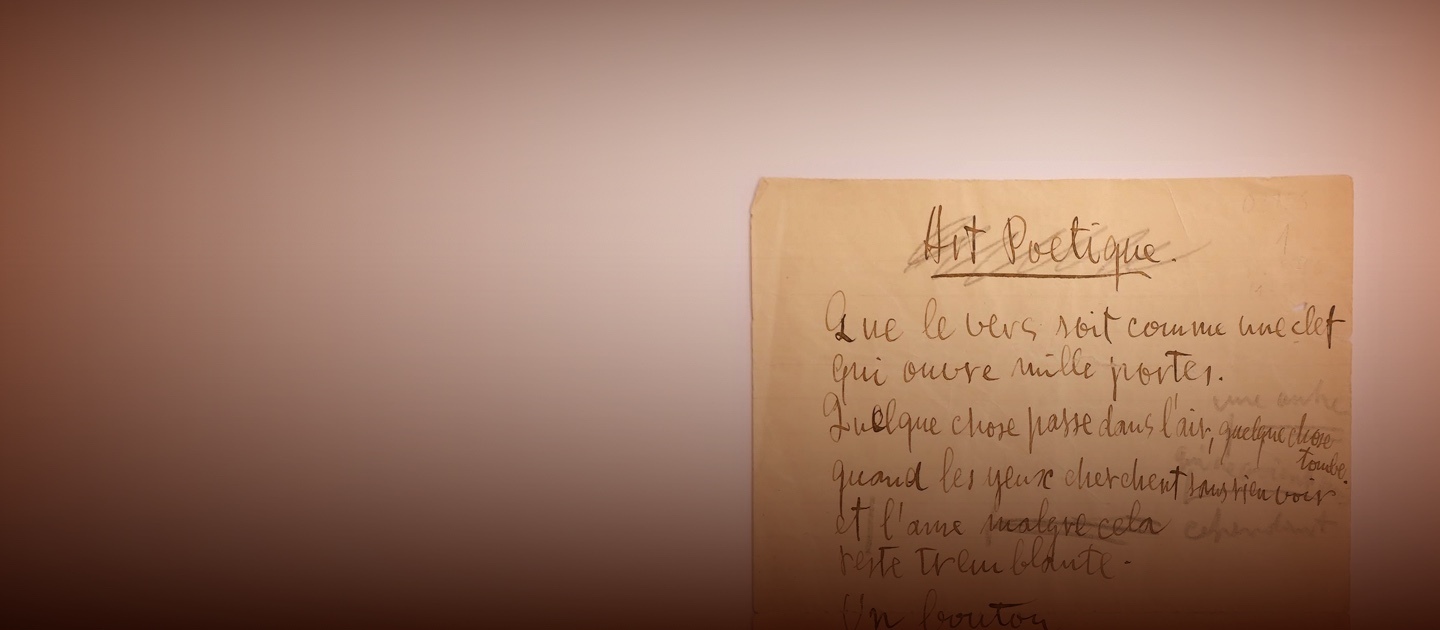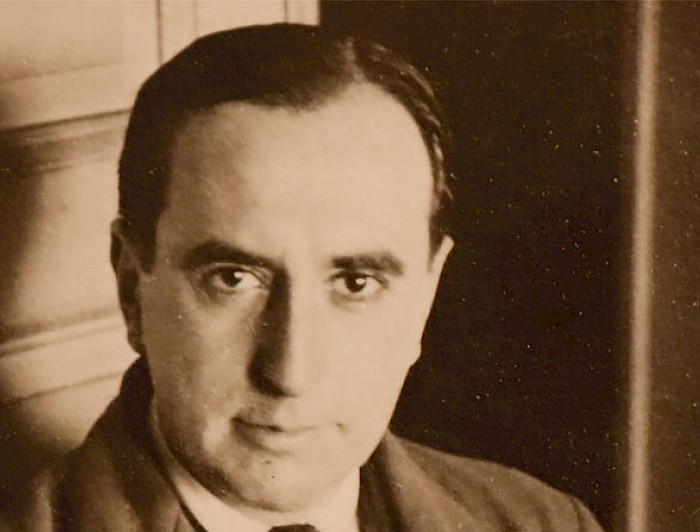
Who was Vicente Huidobro? The Famous Chilean Poet Whose Archive has Arrived at the UC Chile.
The UC Chile has received the archive of Vicente Huidobro, which contains more than five thousand documents, including poems, writings, books, and drawings. An agreement recently signed with Fundación Huidobro will provide access to the work of one of Chile’s most important writers for its study and dissemination.

photo_camera Vicente Huidobro, a Chilean writer and poet.
Vicente Huidobro (1893 – 1948) was a Chilean writer and poet.
He was also a public intellectual whose creation—open to different cultures and to emerging and consolidated knowledge—unfolded in multiple directions and territories.
His legacy can be seen in art and politics; in poetry and novels; in theater and cinema; in his manifestos and chronicles; in art magazines in Paris, Madrid, and Santiago; and in youth groups that he inspired and supported in Chile and abroad.
Together with his wife, Manuela Portales, and their children, he traveled to Europe in 1916. In Paris, he participated in groups that challenged tradition and gave birth to the new art.
He met Picasso, Juan Gris, Robert and Sonia Delaunay, Guillaume Apollinaire, and Le Corbusier, among others, and became a leading player in avant-garde by proposing Creationism and defining it in relation to other proposals.
The Outcome of his Relationship with Europe
Huidobro’s best-known innovation is in poetry. He rejected tradition, waged war on anecdote and description, on realistic mimesis, and proposed a poetry that creates its own world and is governed by its own codes.
His innovation began with his 1916 book El Espejo de Agua, where we find his famous poem “Arte Poética” [Poetic Art]. One verse reads "Invent new worlds and take care of your word," while the final one reads: “The poet is a small God."
In 1918, with the books Ecuatorial and Poemas árticos, Huidobro inaugurated avant-garde poetry in Spanish.
His poems are fragmentary; they suppress punctuation and linear order. They are articulated in a spatial arrangement that uses the whites and spaces of the page. They incorporate visual word play, and the words are uprooted from their usual connections and meanings.
They are poems that, based on unusual images and renewed ideological marks, reveal the collapse of the West and the beginning of a new era: “The cities of Europe go out one by one.”
His manifestos are another of his essential contributions.
In 1914, Huidobro released Non serviam, a manifesto that initiated the Latin American avant-garde and served as a seed of creationism.
This programmatic text destabilized an established taste by proposing a new verisimilitude:
“You can no longer tell me that tree is wrong, I don’t like that sky. I will reply to you, my heavens are mine and that they need not look like thine.”
Later, in other manifestos published in Paris in 1925, he argued and pointed out, with great accuracy, the limitations of Futurism, Dadaism, and Surrealism.
Another of his relevant contributions was his effort to position the avant-garde in the cultural field, in Madrid and Santiago. Huidobro lived in Madrid in 1918, and the impact of his visit gave rise to ultraism.
For Rafael Cansino Assens, the poet's visit was "the only literary event of the year, as he brought with him the latest aesthetic trends from abroad” (Bonet, J.M; 1996).
Artists appreciate the Chilean poet’s books: Horizon carré (1917) published in Paris, and the other four that were released in Madrid in 1918 (Ecuatorial, Tour Eiffel, Hallali–poème de guerre–and Poemas árticos).
Juan Manuel Bonet stressed that in Spain “ultraism would not have been the same without Vicente Huidobro.”
Huidobro's Contribuitions to Chile
His trips to Chile in 1925 and 1933 follow the same groundbreaking style.
He founded newspapers and magazines and convened creators.
When he arrived in Santiago in 1925, he understood the uneasiness and the political and cultural aspirations of the protesting classes. He founded the newspaper Acción, where he published his gritty “Balance patriótico” [Patriotic Balance], and was proclaimed presidential candidate by the youth of the day.
At the same time, he encouraged young poets to edit the magazine Ariel.
During his 1933 trip, Huidobro began to invite people to his house on Cienfuegos Street and thus arose the “tertulia huidobriana,” whose impact can be seen in:
- Painting and sculpture; the Grupo 1933 was born, which organized the first abstract art exhibition in Chile in December of that year and a second one in 1934.
- Architecture; Waldo Parraguez and Jaime Dvor headed a reform at Universidad de Chile, and later Parraguez together with Enrique Gebhard created the magazine Arquitectura, which first appeared in August 1935.
- Literature; Huidobro encouraged the creation of the Grupo Mandrágora, which published a magazine of the same name, then another called Ximena, in honor of his wife. Later, they published the magazine Leitmotiv.
It is impossible to forget that from these gatherings came the 1935 Antología de poesía chilena nueva [Anthology of New Chilean Poetry], and several magazines founded and directed by Huidobro.
The testimonies of his work are eloquent.
According to Fernando Alegría, writer and literary critic, “he physically and metaphysically inspired every young poet who came in contact with him.”
For poet Gonzalo Rojas: “No one sowed more freedom in our boys’ heads than him.”
For historian Mario Gongora, Huidobro “was the highest ‘foundational’ figure of this century” and “a major pioneer of new cultural waves in Chile.”
His Heritage at UC Chile
It is a great joy and responsibility for UC Chile to receive on loan the archive of the Huidobro Foundation, which, thanks to the support of the University President, will become part of the varied artistic heritage that the university already holds, and has been preserving and disseminating for several years. The Faculty of Literature, the Center for Chilean Literature Studies (Celich UC) of the Faculty of Literature, UC Libraries and Ediciones UC, through multiple initiatives, will be able to explore and show his career, the avant-garde movement and a whole era.
At the end of 2021, the Vicente Huidobro Foundation gave the UC Chile a set of more than 5,000 documents that include books, letters, manuscripts, magazines, clippings, and photographs of the poet.
The idea is to make this material available for study, publication, and dissemination.
The Humanities Research Library will be in charge of housing and preserving the 5,231 documents.


